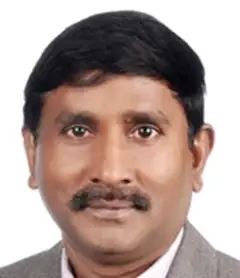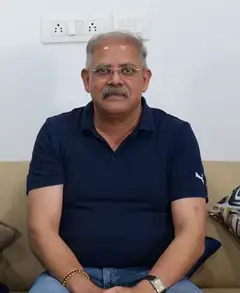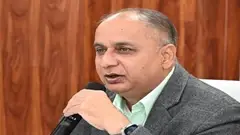
GAIN’s mission is to advance nutrition outcomes by improving the consumption of nutritious and safe food for all people, especially the most vulnerable to malnutrition. By understanding that there is no "one-size-fits-all" way of dealing with the problem of malnutrition, GAIN focuses on developing alliances and building tailored programmes using a variety of models and approaches.
In order to get more insights into the functioning of GAIN, Krishi Jagran interacted with Ishank Mikhail Gorla, who is the Programme Lead at GAIN leading the Commercialisation of Biofortified Crops Programme.
1. How is GAIN addressing the issue of malnutrition in India at various levels?
As an organization, we work by forming national, regional, and global alliances that provide technical, financial, and policy support to a wide range of public and private organizations, focusing attention on where people get their food from – markets. As a result, we give priority to finding ways to change and improve how businesses and governments shape food systems for improved nutrition.
2. What are GAIN’s programs and Initiatives to address malnutrition?
GAIN’s work to improve the consumption of safe and nutritious food is based on three strategic objectives:
-
Increase consumer demand for safe and nutritious food
-
Increase accessibility of safe and nutritious food
-
Strengthen the enabling environment for designing, implementing, and scaling up effective programs
These objectives are linked together: For sustainable change, consumers need to demand more nutritious foods from public and market sources. That demand needs to be met and expanded by businesses, governments, and civil society working together to increase the availability and affordability of safe and nutritious foods. Underpinning this must be an environment that supports the finding of solutions: it needs the policy, legislation, codes of conduct, accountability mechanisms, and data to support partnerships that can improve diet and advance nutrition status. To support these goals, GAIN and our partners in India undertake a range of programs within the food system:
(a). Large-scale food fortification (LSFF)
In India, GAIN was set up as a Liaison office in 2006. Considering that micronutrient malnutrition is a serious public health problem in India, GAIN included large-scale food fortification (LSFF) as its priority agenda and started working in this domain in 2009, by developing an approach paper Integrated Programme Strategy. For over 15 years in India, GAIN has been working with governments at the national and state level, private sector partners including SMEs, civil society organizations, and research and academic institutions to scale Staple Food Fortification. GAIN contributes at scale to improve the food system in India by enhancing the quality of diets of the population at large, with a focus on addressing the micronutrient deficiencies of the most vulnerable.
(b). Commercialisation of Biofortified Crops (CBC)
GAIN and HarvestPlus have collaborated to commercialize biofortified Zinc Wheat and Iron Pearl Millet in 6 states in India. Having commenced implementation in 2020, the project catalyzes the scale-up and reach of nutrient-rich crops through partnerships with the seed and food industry. We partner with food processors, millers, aggregators, farmer groups and other value chain actors to quickly scale up the seed and grain uptake of these biofortified crops. Simultaneously, we engage with governments to encourage the inclusion of biofortified staples in social protection schemes. The partnership also explores digital platforms for innovative solutions to commercialization while simultaneously improving the nutrition of the most vulnerable smallholder farmers.
(c). Workforce nutrition
The workforce nutrition programme in India works in partnership with global tea brands, tea estate managements, the Indian Tea Board and local tea associations to demonstrate effective interventions to improve awareness, demand and supply of nutritious foods for workers and their families. Since its launch in 2016, the programme has benefited more than 43,000 tea workers and their families. GAIN in India will scale up the programme in another 200 tea estates in Assam, India.
(d). Decentralized Production of Fortified Blended Food (Concluded/not under implementation)
GAIN facilitated the establishment and operationalization of four production facilities to produce and distribute a quality assured fortified blended nutritious food product to approximately 70,000 targeted beneficiaries (children and pregnant and lactating mothers) in the states of Karnataka and Bihar. GAIN’s model for community-owned production units that can be operated and managed independently by women’s groups is a sustainable and cost-effective solution. Food production is undertaken as an industrial, quality-assured process, that is easy to monitor and replicate.
(e). Integrated Management of Acute Malnutrition (IMAM): POSHAN (Concluded/not under implementation)
POSHAN (Positive and Optimum care of children through a Social Household Approach for Nutrition) project implemented community-based management of acute malnutrition in Rajasthan. Led by the National Health Mission, Government of Rajasthan, and supported by development partners GAIN, Action Contre la Faim and UNICEF, POSHAN was implemented in 50 blocks in 20 districts of Rajasthan. As an Integrated Management of Acute Malnutrition (IMAM) approach, it focused on prevention and early correction through home-based care and treatment of SAM children by Energy Dense Nutrition Supplementation (EDNS).
3. Tell me about GAIN's multi-sectoral approach to alleviating the problem of malnutrition.
GAIN offers high-quality know-how transforming make food systems to improve the consumption of nutritious and safe food for all people, especially those most vulnerable to malnutrition. GAIN is unique because of its focus on food systems and diet quality, our alliance-based approach to working, and our ability to engage critically and productively with the private sector.
We aim to support and advise the Government of India and state governments, businesses, and development partners as they build and mobilize food and nutrition plans to advance nutrition outcomes. In this context, we work with governments, businesses, and civil society stakeholders to:
-
design and deliver food-based policies and programs that improve the consumption of safe and nutritious foods
-
be knowledge leaders in our field by measuring and analyzing programs and policies related to improving the consumption of safe and nutritious foods
-
help to scale up programs with demonstrated benefits so they can achieve widespread impact
4. Food fortification and Biofortification- How is it helping in achieving nutritional security in India by 2030?
Given the high burden of malnutrition in India, there is an urgent need to strengthen nutritional interventions and food security initiatives with good governance, focused policies, and evidence-based interventions. In developing countries like India, Large-scale food fortification (LSFF) is a key part of the response to the crisis of malnutrition, adding one or more essential nutrients to widely and regularly consumed foods during processing. This impactful and cost-effective intervention can reach billions of people by making commonly consumed foods such as wheat and maize flour, rice, and edible oil and condiments such as salt more nutritious, combatting vitamin and mineral deficiencies and protecting human health. In an ambitious attempt to combat hidden hunger and attain the malnutrition-free goal, the Government strengthened rice fortification to bridge dietary nutrient gaps and improve health outcomes in a short time.
Biofortification complements existing interventions, such as supplementation and industrial food fortification to alleviate deficiencies. It has, however, two key advantages: its long-term cost-effectiveness, and its ability to reach underserved rural populations.
Malnutrition is a complex challenge, especially for low-income and vulnerable sections of society, who cannot afford balanced, diversified diets. No single intervention can alleviate micronutrient deficiencies, however, both industrial fortification and biofortification are population-based strategies that have proven to reduce micro-nutrient deficiencies when consumed regularly and can contribute to achieving nutritional security in India.
(Author: Shivam Dwivedi)
















Share your comments